This feature article originally appeared in the December 2018 magazine edition of Australian Aviation.
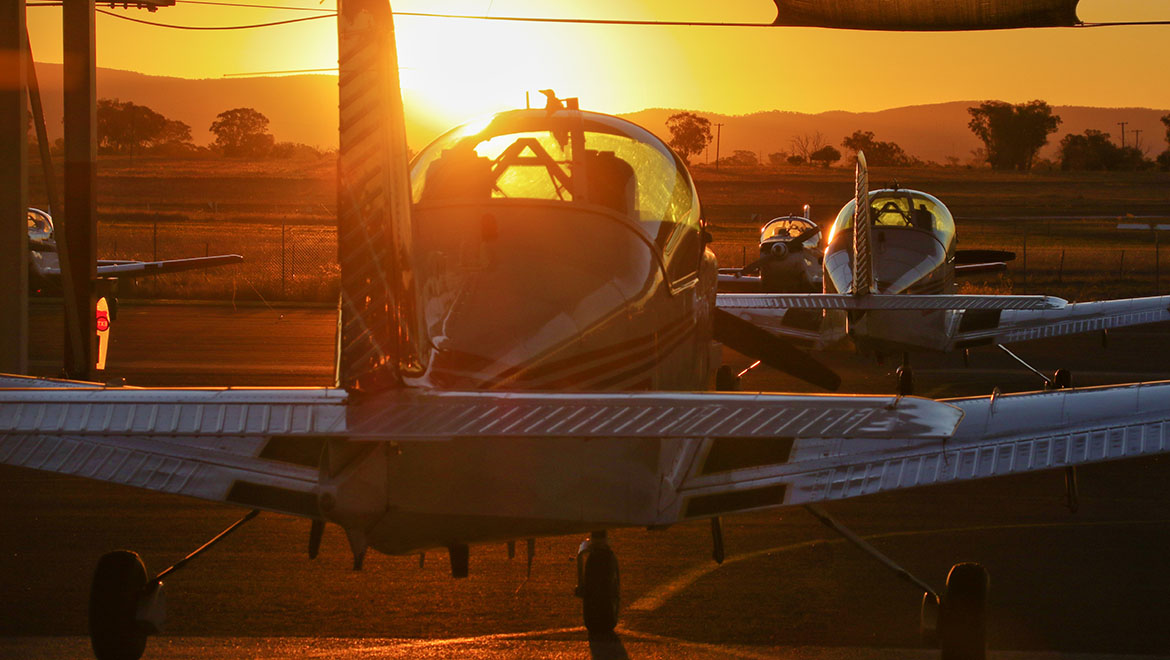
They called them parrots, or even plastic parrots, the brightly painted CT-4 basic trainers in which a generation of Australian Defence Force (ADF) pilots made a first, anxious solo flight.
Soon the CT-4 will end ADF service for a second time, with the final RAAF and Navy basic flying course winding up in February and the final, single service class of Army pilots finishing up next October.
At that point, the ADF association with the CT-4 will end, along with its association with Tamworth, NSW – home since 1993 to what is now the Australian Defence Force Basic Flying Training School (BFTS).
The history of the CT-4 with the ADF parallels the evolution of basic defence flight training, from a time when each service had particular and different requirements: when RAAF pilots flew helicopters as well as fast jets; when Navy pilots operated from aircraft carriers; and Army pilots mostly flew fixed-wing aircraft.
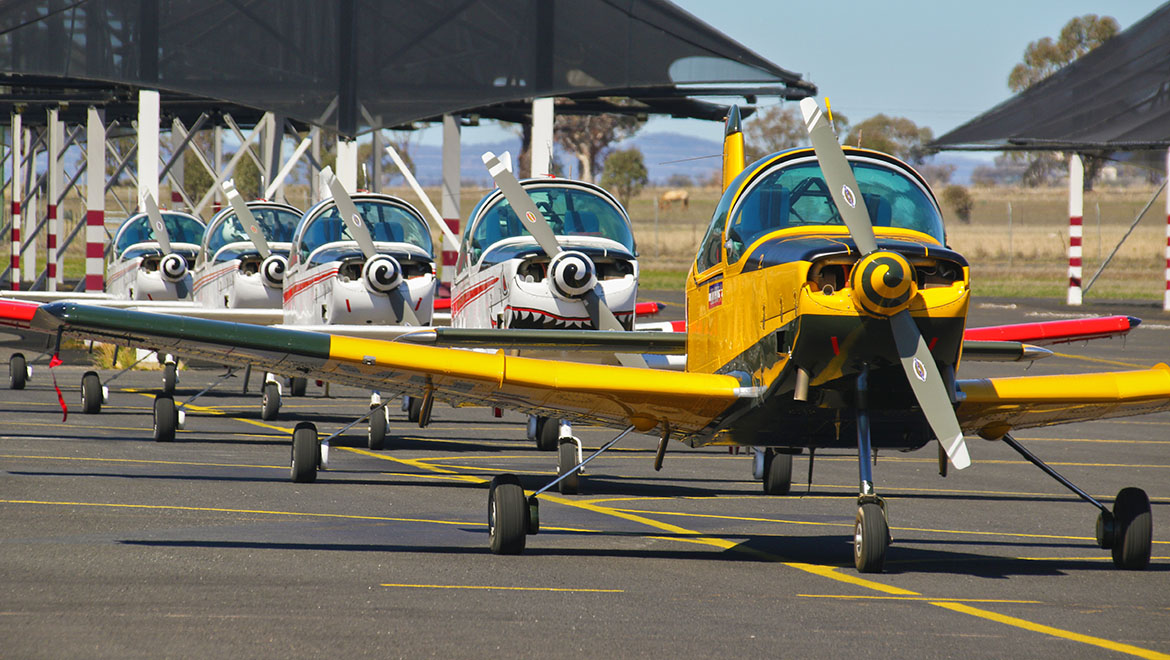
Starting in January, the first training course involving aspiring pilots begins at the reformed 1 Flying Training School (1FTS), East Sale, Victoria on the new Pilatus PC-21.
For the very large number of pilots who learned to fly in CT-4s at Tamworth, it is the sad end of an era.
“I was a student at BFTS, I have been an instructor at BFTS and now I am the CO. To me it’s quite personal,” said Wing Commander Leigh Dunnett, the BFTS commanding officer.
“I have had three postings into Tamworth. It’s always been an awesome community to live in – the people are great, friendly and supportive.
“We have put through nearly 2,300 students at BFTS since 1999. Over 4,000 flight screening students have been through since 1993 and we have operated in excess of 280,000 flying hours.”
And all that achieved without losing an aircraft, let alone a pilot.
WGCDR Dunnett, who has logged 1,500 hours on CT-4B aircraft, said it was known as an easy aircraft to fly but difficult to fly well.
“It’s a robust and forgiving aircraft that has proven itself with students at its controls over the last 19 years,” he said.
“It stalls very predictably. It doesn’t have much performance, but once you master the energy of the aircraft it sets you up for success on others.”
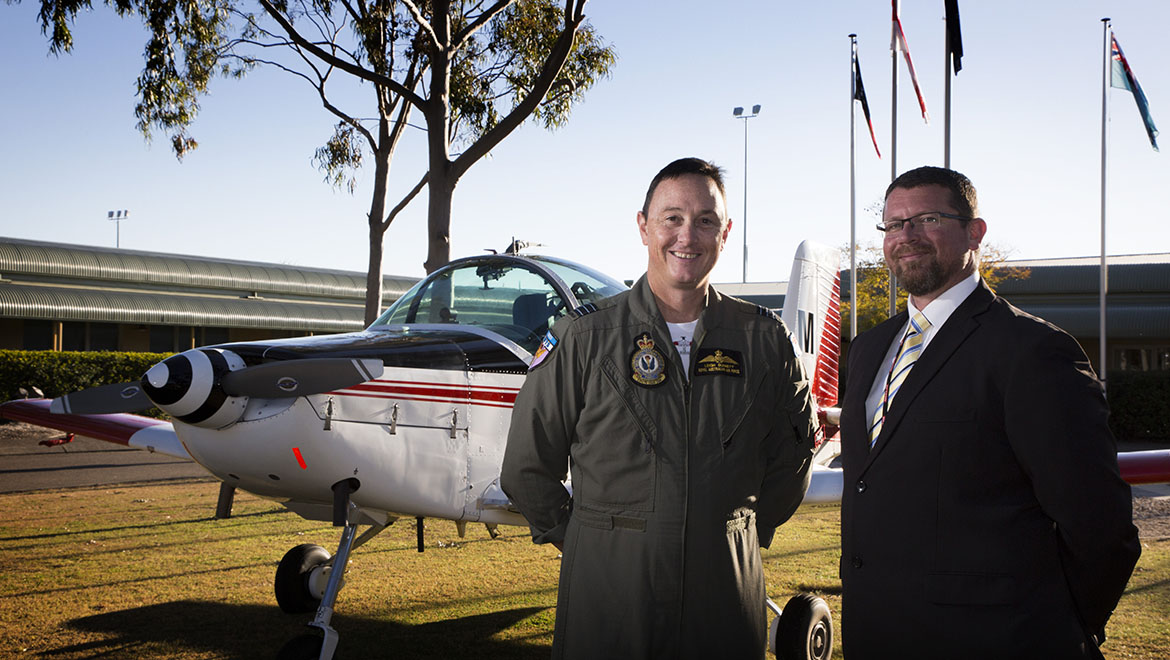
Jim Maguire, BAE Systems Australia project manager for flight training at Tamworth, agreed.
“It’s a great little aircraft, full aerobatic capability, plus six, minus three load rating on these things, probably slightly under-powered but that’s not a bad thing for an ab-initio trainer; extremely forgiving,” he said.
“They can take a lot of abuse, especially in hard landings and they still roll back out onto the line the next day.
“They are a nimble little aircraft. When you do full aerobatics with these things, they are pretty full on. It is very similar to the old A-models. Once you have flown one, you really do get a passion for them.”
To celebrate the achievements at BFTS Tamworth, the RAAF and BAE Systems staged a “parrot party” on September 21 with a flypast of 30 BFTS aircraft plus some privately-owned CT-4s.
That may be a world record for the number of identical aircraft performing a fly-past.
The CT-4 emerged from a design by Australian Henry Millicer, whose Millicer Airtourer first flew in 1959. Production rights were sold subsequently to Victa Consolidated Industries, well-known today for the production of lawnmowers.
The first Victa Airtourer flew in December 1961 and Victa produced 172 aircraft to the end of 1966 at which time it could no longer obtain tariff protection or a government subsidy to protect it from foreign imports.
As a result, the company sold Airtourer production to Aero Engine Services Limited (AESL) of Hamilton, New Zealand, which went on to produce 80 Airtourers in a number of variants.
AESL also acquired production rights to another Millicer design, the four-seat Aircruiser. In the late 1960s the RAAF was looking for a new basic trainer to replace its CAC Winjeel and AESL responded with a two-seat development of its T4 Aircruiser powered by a 210hp (157 kW) Rolls-Royce Continental engine, hence the designation CT-4.
Although similar in appearance to the Aircruiser, the CT-4 featured extensive structural changes to make it better for aerobatics.
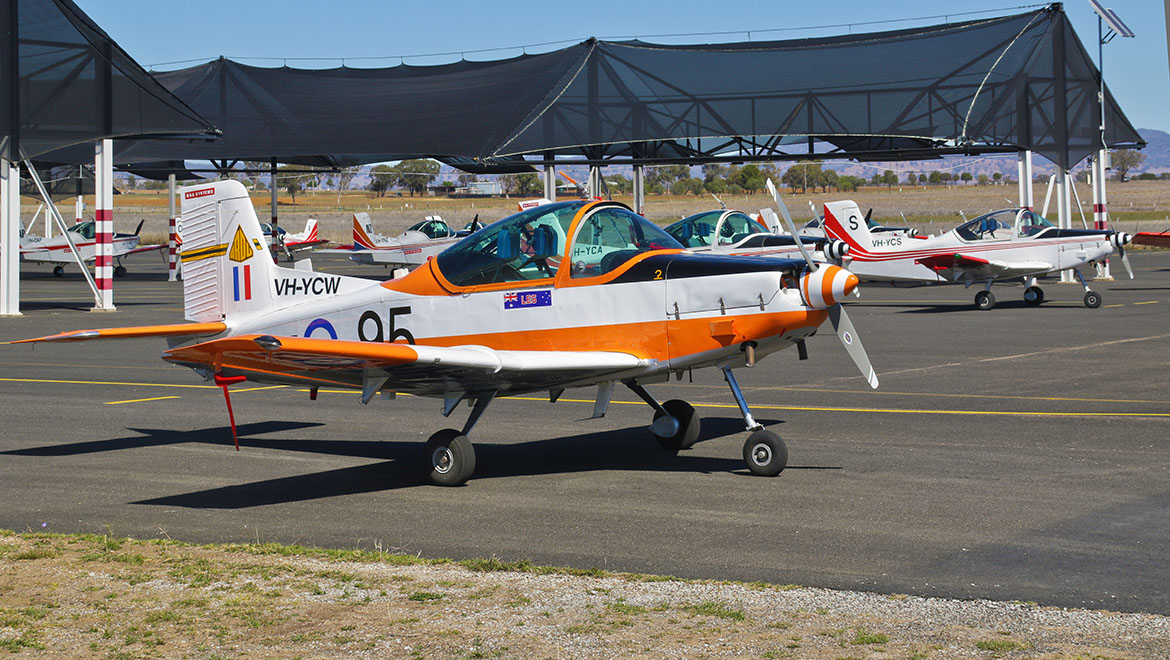
In 1972, the Australian government announced that a CT-4 variant, the CT-4A, had been selected as a preferred training type over the Scottish Aviation Bulldog and placed an order for 37 aircraft at a cost of $3.2 million.
Production started in 1974 at what had become NZ Aerospace Industries (NZAI) following the merger of AESL and Air Parts (NZ) Ltd., and the first RAAF aircraft, A19-027, was delivered to RAAF Williamtown in January 1975.
Every RAAF CT-4 was delivered across the Tasman, most by NZAI chief pilot Cliff Tait. Flying long overwater flights in a single-engine aircraft is not for the faint-hearted, but with long-range tanks fitted and stops at Norfolk or Lord Howe Islands, all arrived safely.
The first basic flying course was conducted at RAAF Point Cook in 1975.
International intrigue then played a part in the next stage development of the CT-4 with NZAI figuring it was on to a winner after receiving an order for another 14 aircraft from a firm called the Breco Trading Company, on behalf of a Swiss flying club.
It turned out Breco was actually a front for the Rhodesian Air Force and had employed subterfuge to evade sanctions imposed by the United Nations. The New Zealand Government was having none of it and forbade export of the aircraft.
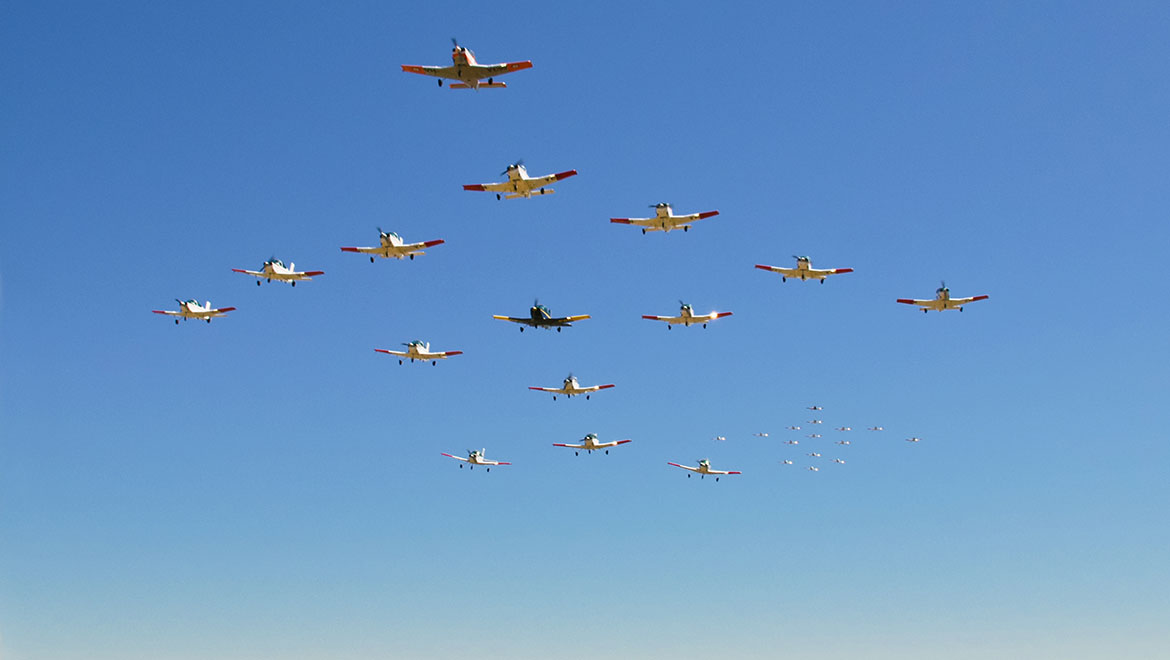
Some reasonable minds might suggest the Rhodesian Air Force simply needed a basic trainer. RAAF aircraft historian John Bennett noted, however, that these aircraft had provision for underwing stores and capability for a higher all-up weight.
So maybe the Rhodesians, then embarking on the Bush war which would ultimately bring Robert Mugabe to power, had in mind an altogether more warlike use for their parrots.
The story ended well. The RAAF needed some more CT-4s and, in 1980, arranged to buy up the 14 now stored aircraft. They were converted to RAAF CT-4A configuration and delivered from September 1981.
That gave the RAAF a fleet of 49 as two had been lost.
In December 1978, aircraft A19-057 was circling the oval at RAAF East Sale for a Christmas party, with Santa in the passenger seat waving at the children below. The aircraft clipped a tall pine tree, fell to the ground and caught fire.
The pilot was unhurt, but Santa broke his leg.
In August 1979, aircraft A19-028 crashed while conducting aerobatics at Oakey, Queensland, killing its pilot Flight Lieutenant Stephen Elliott and passenger Corporal Rory Ashton, a member of the UK Royal Corps of transport who was in Australia for an exercise.
In another incident, aircraft A19-067 ditched into Port Philip Bay in February 1984 when practising a simulated engine failure.
Continuing the diverse history of CT-4 manufacture, NZAI went into receivership in 1982 and was succeeded by Pacific Aerospace Corporation. The final production run was for the NZ Air Force, with the last aircraft coming off the line in May 1982. That could have been the end for CT-4.
The 1980s were a period of great change for the Australian Defence Force. New and advanced capability aircraft such as the F/A-18 Hornets and Black Hawk helicopters were entering service; old “certainties” such as the Cold War, were ending.
Flight training arrangements were also evolving in an era of increasing recognition that almost every military activity could be performed by private industry.
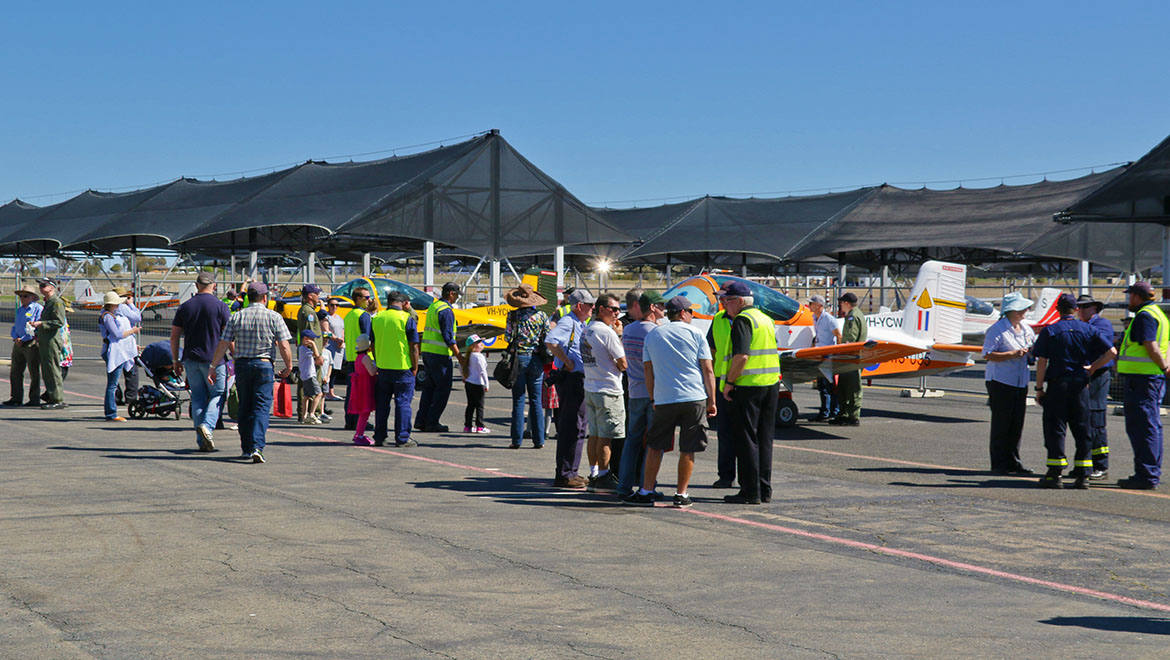
So it was that BAE/Ansett won a contract to provide basic Defence flight training at its new Tamworth facility, then getting underway to provide training of Australian and international airline pilots. The first Defence course started in 1993.
The 1FTS completed its final course on the CT-4 in December 1992 and then disbanded in January 1993, ending 78 years of flying training at Point Cook. At that time the RAAF and Navy started “all-through” pilot training on Pilatus PC9 aircraft at 2FTS at RAAF Pearce in Western Australia.
And so the CT-4 officially ended its first round of service with the ADF in December 1992 and there were various CT-4 flypasts over Melbourne and Sydney in April 1993 marking this sad occasion.
That left a large fleet of surplus aircraft and Defence decided to sell the lot at one big auction of 36 CT-4s, staged at Bankstown, Sydney in May 1993. Bennett said this was a disposal of Defence aircraft the like of which hadn’t been seen since the RAAF sold off its Tiger Moths after World War 2.
The CT-4s went in a flash for prices ranging from $42,000 to nearly $70,000. A few have since ended up in the United States, but most of those on the Australian civil register date from this sale.
The ADF’s connection to Tamworth and Bae/Ansett – now BAE Systems Australia – started out in 1993 with a unit called Headquarters Training Command Detachment A. This was a RAAF detachment with a small number of military staff and a larger number of contracted civilian flying instructors.
“That was set up because Army no longer had the opportunity to train at Point Cook on the CT-4A when RAAF and Navy went to the ‘all-through’ PC-9 course,” said WGCDR Dunnett.
In 1993, the unit started ramping up a flight screening program, assessing the aptitude of aspiring RAAF and Navy pilots. In order to conduct flight training, new aircraft were needed and it was decided the best for the job was the CT4-B (mostly a CT-4A but with improved instruments). That necessitated reopening the NZ production line with the first batch of 12 new aircraft delivered in 1991-92.
Subsequently, the school acquired 14 ex-Royal New Zealand Air Force aircraft in 1999 and four ex-civilian aircraft in 2012, to make a total fleet of 30.
For basic flight screening and training, Tamworth had a lot going for it.
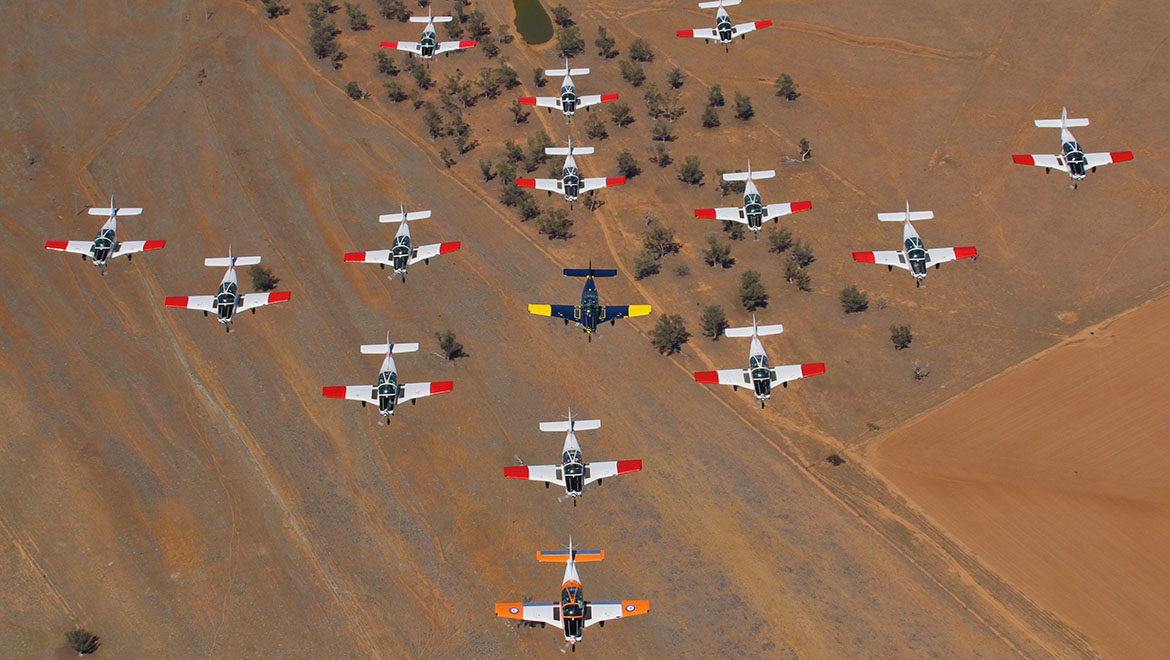
During World War 2, it was home to RAAF No 6 Elementary Flying Training School. After the war, East-West Airlines was founded in Tamworth in 1947.
Taking flight training to Tamworth apparently involved some anguish. Air Commodore Rod Luke, a guest at the parrot party with his own CT-4, commented that the RAAF was hell-bent on initial training going to East Sale. Tamworth won out because of its good weather and wide open spaces.
Jim Maguire said Tamworth provides more than 300,000 hectares of mostly cropping land, open unobstructed country to practice low-level operations and forced landing drills.
“…and even, God forbid, an out landing. The students have more than enough opportunity to make a successful out landing if it’s required,” he said.
“Tamworth has a mix of controlled and uncontrolled airspace. Fifteen miles around Tamworth is controlled airspace so it’s really good exposure for the students back into controlled airspace.
“Within 15 miles we are in established training areas and we have a massive area to play in satellite airfields, such as Gunnedah and Quirindi, and access to the western navigation routes.
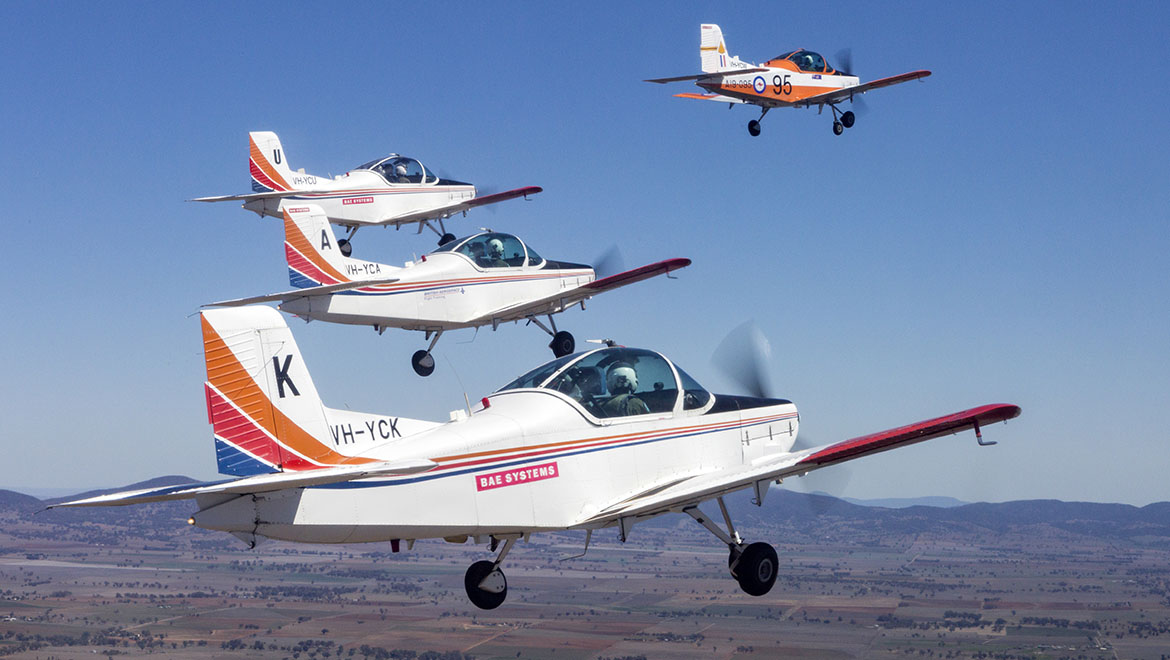
“The students do a lot of navigation and also solo navigation. We fly as far west as Moree and Dubbo to give the students really good exposure to cross-country navigation as well.”
Tamworth weather allows more than 300 full days of sorties per year.
“Even on a bad day with rain, we can normally squeeze in a morning or an afternoon sortie. Being open with bordering ranges, we don’t tend to get fogged in. It’s an ideal place to do flight training,” he said.
BFTS was officially re-formed in 1999, with its first course just for Army pilots, second course for Army and Navy pilots and third course including the Air Force.
The basic course runs for around six months, with candidates going solo after about 12-13 hours in the cockpit. By the end of the course, each will have spent about 65 hours in the cockpit and many more in the classroom.
At the end of the course, RAAF and Navy pilots head off to 2FTS for advanced training on PC-9s.
Army pilots stay at Tamworth for the 10-week Intermediate Pilot Course involving low-level navigation, formation and advanced instrument flying, before heading off to learn to fly helicopters.
Previously that was at Oakey but is now at HMAS Albatross, at Nowra, NSW through the new Joint Helicopter School.
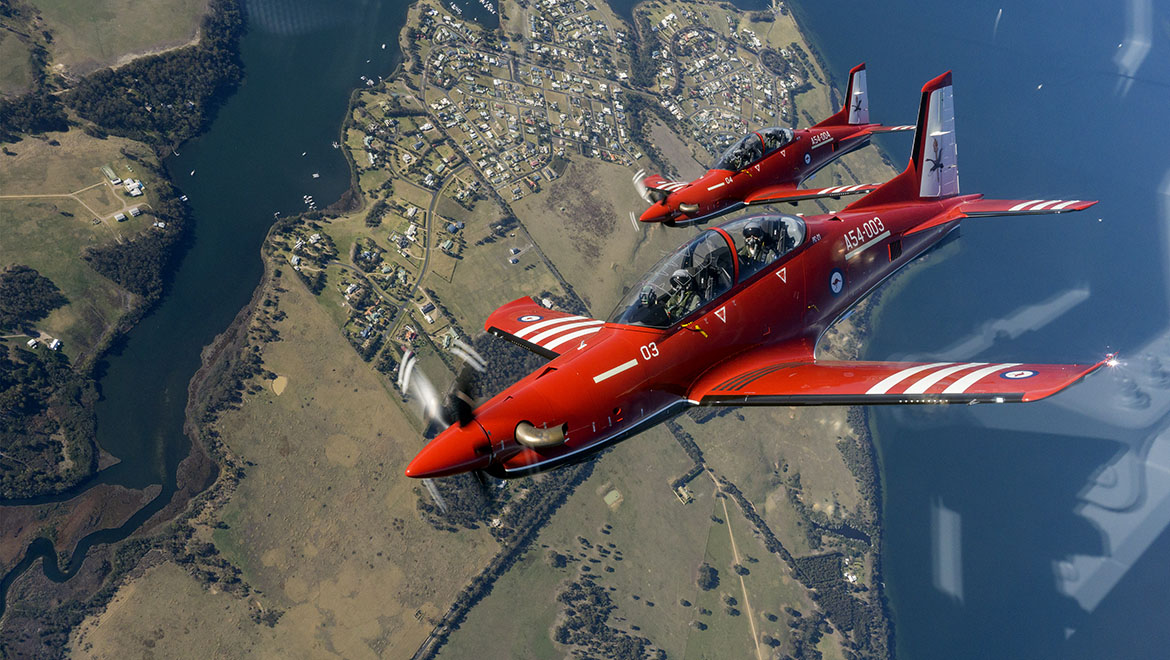
Learning to fly for the ADF at Tamworth isn’t as relaxed a process as at the local aero club. WGCDR Dunnett said the aim was to impart core knowledge, skills, attitude and, really importantly, ADF values.
“Values-based leadership is what we are after. We get them capable of core knowledge, skills, attributes and capabilities for single service advanced flying training. They have learned the basics of operating a simple platform but to a high standard,” he said.
“We demand high levels of accuracy in flying and the application of specific techniques to operate the aircraft.
“Rather than just simply achieving a landing, we expect them to apply specific techniques, work cycles and airmanship in achieving the outcomes, rather than simply arriving at the threshold on the ground. They have to do that repeatedly.
“The basis behind that is that they are going to be instructed using the same tools of instruction at the next training school on the advanced aircraft.”
Instructors are all experienced pilots with backgrounds in all current platforms. Most have deployed and flown internationally.
WGCDR Dunnett said a key factor was “ensuring the operational context was conveyed in the ‘why’ and ‘how’ of training.
“We don’t just want them to fly a CT-4. We want them to fly as accurately as possible while developing the ability to have spare capacity for airborne decision-making skills in a potentially complex environment overseas,” he said.
“It could be at the controls of a multi-million dollar aircraft in contested airspace and still have the spare capacity to speak to people, coordinate, offer assistance.”
Similarly, Maguire said anyone can learn to fly an aeroplane.
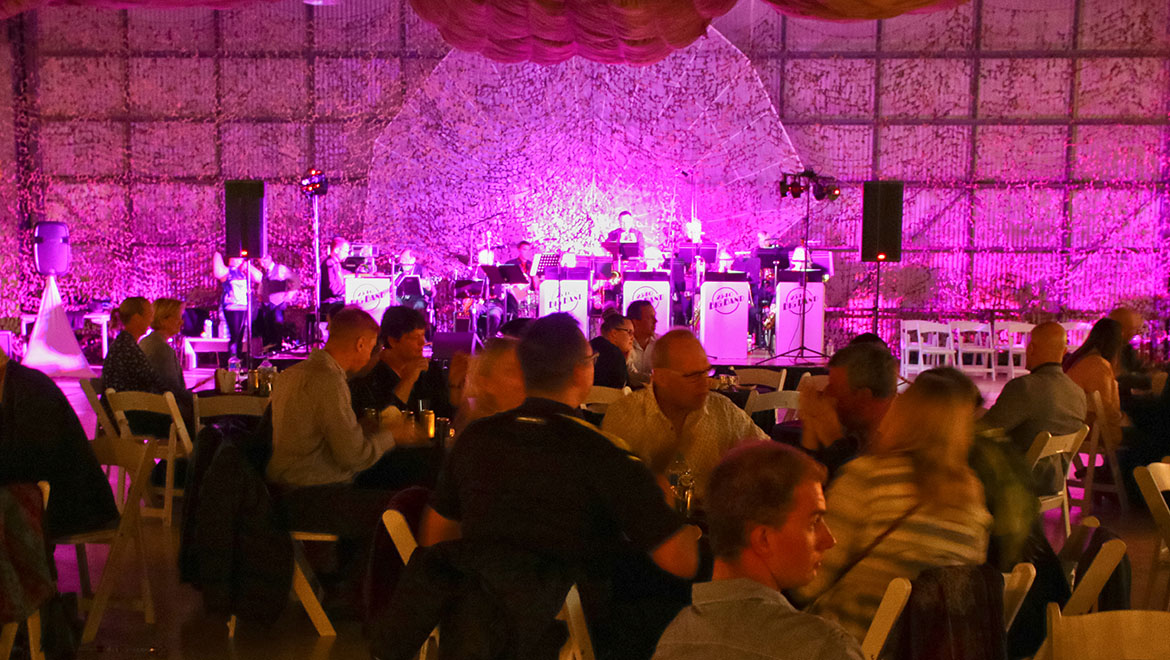
“We are teaching students here to prepare to use an aircraft as a weapon. It’s either as a weapon or in support. Flying has got to be second nature. You have to be able to use that asset,” he said.
The course featured a massive learning curve, he said. “It is only a short amount of flying. It’s one of the hardest courses because the content is jammed in at pace,” he said.
“Ground school has more than 320 lessons and 15 exams in six weeks. You are smashing content. In the civil world you have a chance to learn at your own speed whereas in the military world you learn at the military’s speed.”
Maguire said the typical course was around 20 students, most aged in their early to mid-20s, –and in his time at Tamworth he had seen pass rates greater than 90 per cent and failure rates higher than
70 per cent.
In one course, just six of 20 passed and that was down to lack of teamwork with members just not helping each other through the difficult training.
At the other end, one course excelled, with just two failures, both for medical reasons.
“They were very good at teamwork and that’s what helped them through. Where they saw one of their mates falling behind, they helped, which in turn actually improved them,” he said.
WGCDR Dunnett said certain individuals stood out. “They may not have flown an aircraft previously apart from a few hours gliding. Their reception of instruction can sometimes just be exceptional,” he said.
“You demonstrate a manoeuvre and they show that manoeuvre back and it’s just faultless. That’s sometimes visible within the first 10 hours of flying.
“There are certainly those who have that natural ability to learn, observe and take in a huge amount of complex information, and not only demonstrate it back to the instructor but retain it for future use. That is the tough thing.”
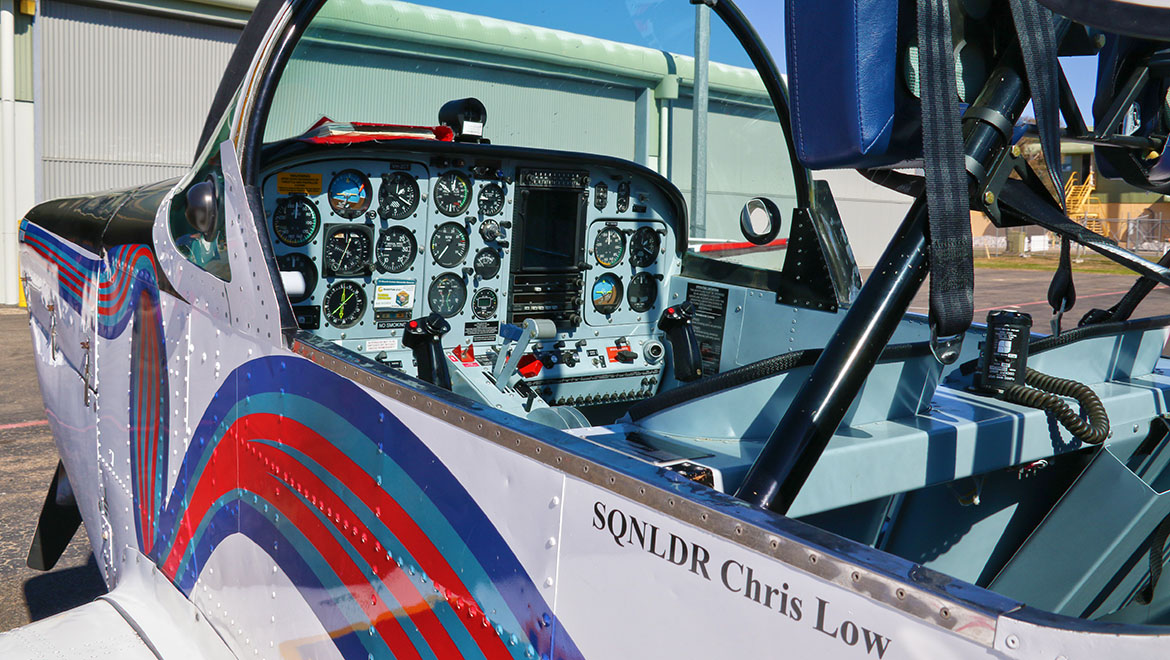
Each course now includes female candidates, typically two to four.
“We have seen an increase in female pilot candidates. Gender is not an obstacle for pilot training,” WGCDR Dunnett said.
“We see females and males as equals with no obstacles to doing what they want to achieve, all the way to being a fast jet pilot, which I think is great.”
In 2015, BAE Systems lost out to Lockheed Martin Australia on the contract for the new ADF pilot training system which moves to RAAF East Sale.
In keeping with the RAAF’s transition to a true fifth-generation force, the new PC-21 is a vastly different aircraft to the CT-4, featuring a full glass cockpit, retractable undercarriage, and much more power. Before any pilot flies solo in a PC-21, he or she will have flown many hours in the PC-21 simulator.
So where does that leave the BAE Systems flight school at Tamworth and its CT-4 fleet? In October last year, the company announced it would lease part of the facility to CAE Oxford Aviation Training Academy for training of its commercial pilot customers.
As well as basic flight training of ADF pilots, it also trains Singaporean, Brunei and PNG Defence Force pilots and will continue to the end of next year.
Maguire said BAE Systems Australia was looking to sell its facility. “We are working right now with some very strong candidates that will take this into the future in the right way,” he said.
“We are adamant about leaving the right legacy for Tamworth after 28 years here. It is not going to be an open market with the highest bidder successful. It is about transitioning this in the right way for BAE and the Tamworth region.”
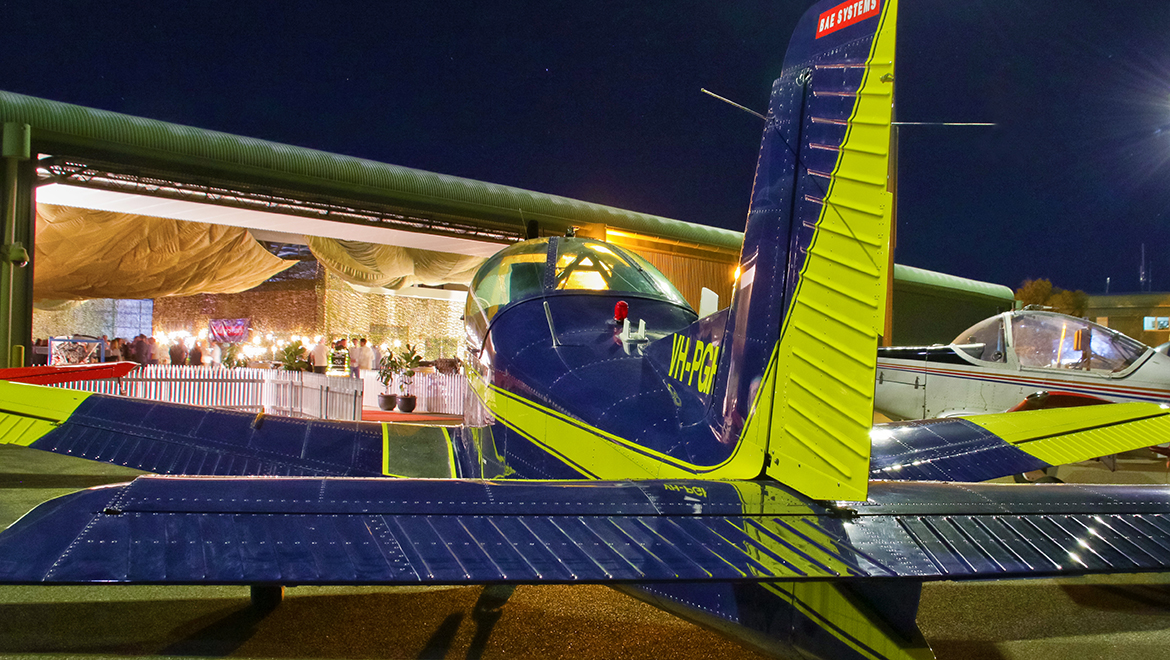
And that includes its fleet of 30 CT-4B aircraft.
“We will look to divest the aircraft as well, probably commencing in the middle of next year. We have had a lot of keen interest, everything from mums and dads through to full fleet sales. I really don’t believe we are going to have trouble selling them.”
This article originally appeared in the December 2018 magazine edition of Australian Aviation. To read more stories like this, subscribe here.












